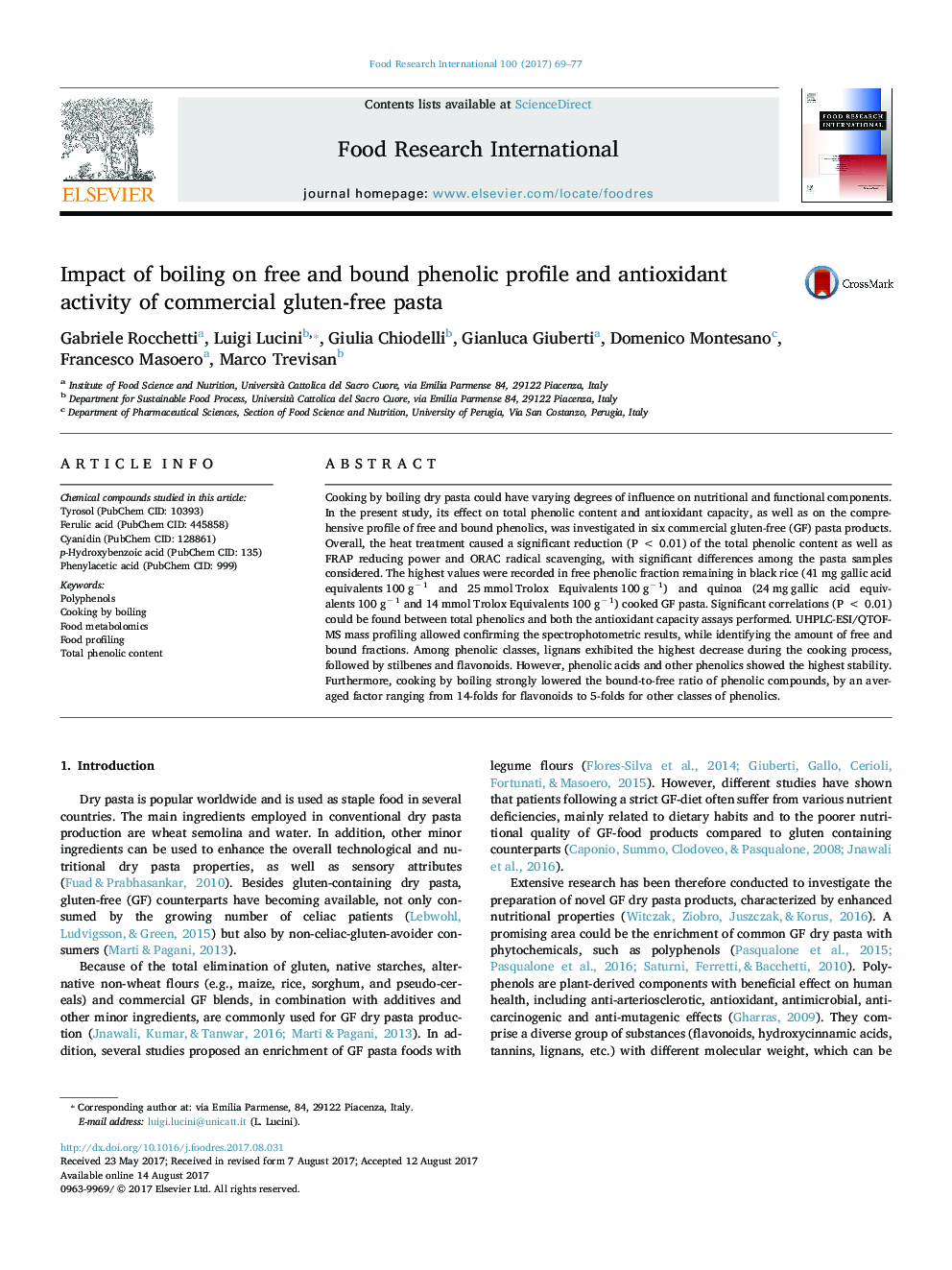| کد مقاله | کد نشریه | سال انتشار | مقاله انگلیسی | نسخه تمام متن |
|---|---|---|---|---|
| 5767828 | 1413206 | 2017 | 9 صفحه PDF | دانلود رایگان |
- Gluten-free pasta from alternative non-wheat flours are rich in phenolics.
- Boiling caused a significant reduction in total phenolic content.
- Cooking by boiling lowered the bound-to-free ratio of phenolics.
- The antioxidant potential of GF pasta samples increased after cooking.
- Lignans underwent the highest decrease, followed by stilbenes and flavonoids.
Cooking by boiling dry pasta could have varying degrees of influence on nutritional and functional components. In the present study, its effect on total phenolic content and antioxidant capacity, as well as on the comprehensive profile of free and bound phenolics, was investigated in six commercial gluten-free (GF) pasta products. Overall, the heat treatment caused a significant reduction (P < 0.01) of the total phenolic content as well as FRAP reducing power and ORAC radical scavenging, with significant differences among the pasta samples considered. The highest values were recorded in free phenolic fraction remaining in black rice (41 mg gallic acid equivalents 100 gâ 1 and 25 mmol Trolox Equivalents 100 gâ 1) and quinoa (24 mg gallic acid equivalents 100 gâ 1 and 14 mmol Trolox Equivalents 100 gâ 1) cooked GF pasta. Significant correlations (P < 0.01) could be found between total phenolics and both the antioxidant capacity assays performed. UHPLC-ESI/QTOF-MS mass profiling allowed confirming the spectrophotometric results, while identifying the amount of free and bound fractions. Among phenolic classes, lignans exhibited the highest decrease during the cooking process, followed by stilbenes and flavonoids. However, phenolic acids and other phenolics showed the highest stability. Furthermore, cooking by boiling strongly lowered the bound-to-free ratio of phenolic compounds, by an averaged factor ranging from 14-folds for flavonoids to 5-folds for other classes of phenolics.
262
Journal: Food Research International - Volume 100, Part 2, October 2017, Pages 69-77
